I’d known there was a chance the car would get stuck—a fifty per cent one, according to my guide—when we attempted to ford the rushing river before us. But it wasn’t until the moment I felt the tires of the Soviet-made UAZ Bukhanka sink into the soft mud of the South Gobi that reality began to sink in for me—when I’d asked myself “is Mongolia worth visiting?” weeks earlier, this wasn’t the sort of eventuality I’d put in the “No” column.
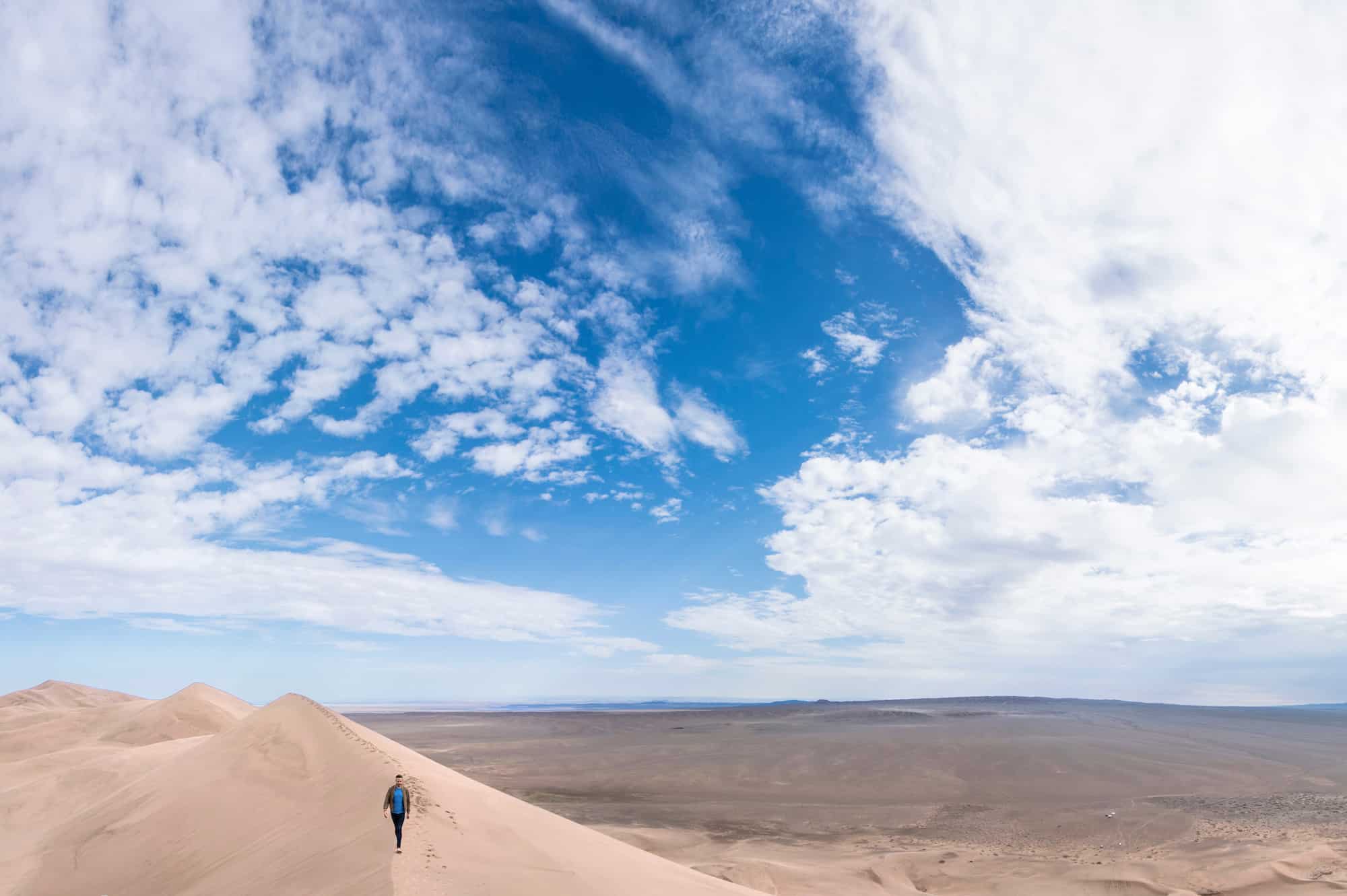
Soon, liquid the color of chocolate milk was flooding in. The conversations taking within the van shifted from rooting the driver on as he attempted to free us, to deciding in which order myself and the other four passengers would evacuate. Internally, I did a brief inventory of my belongings in order to determine which were essential to the remainder of my Mongolia trip, then grabbed as much as I could carry and peaced out.
I climbed first into the front cabin and then over the driver, who was still strapped into his seat, then planted one bare foot at a time into the surprisingly warm, reassuringly shallow water. I looked up into Mongolia’s Eternal Blue Sky and breathed deeply, thankful above all for my safety, then realized I’d left one of my most useful possessions behind.
Blinding Cobalt
In the moments before our doomed crossing, I’d been reading Jack Weatherford’s Genghis Khan and the Making of the Modern World and joking with my Mongolia tour companions, three Singaporean girls in their early 20s, about the “Oregon Trail” computer game that has been popular in the years before they were born.
“I doubt our experience will be so dramatic,” I laughed, whistling the half-bar lamentation that would play every time a mishap would befall a covered wagon, or someone would die of dysentery, then resumed reading about the chaos into which Genghis Khan’s empire fell after his death, due to the ignorance—and arrogance—of his various descendants.
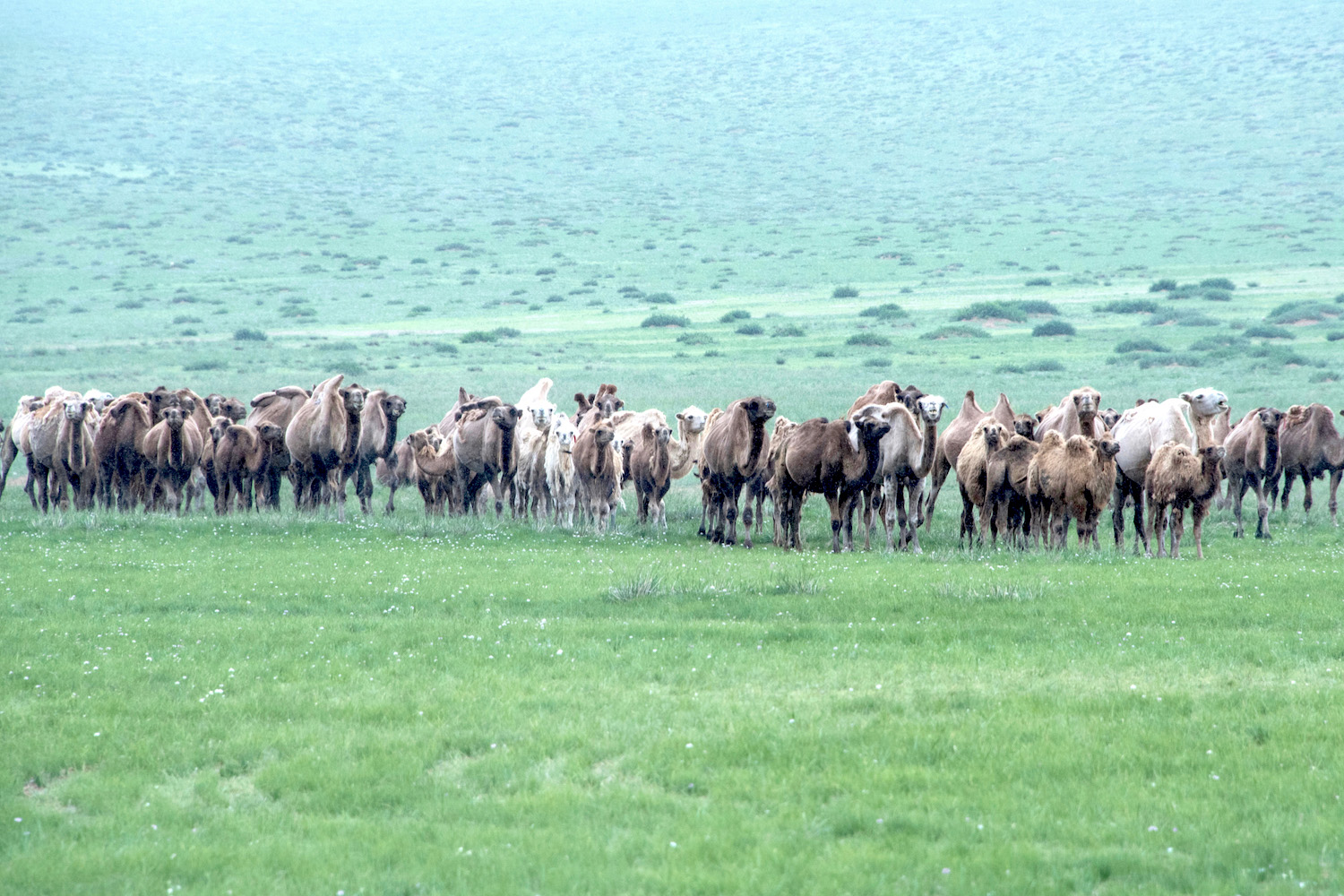
A week earlier, inside a supermarket an hour outside of Ulaanbaatar, my greatest worry had been rabies, my greatest regret that I’d only learned about its prevalence in Mongolia when it was too late to start the vaccine series.
As I pushed the cart around in search of wet wipes to bathe me in the absence of showers and snacks I could eat when I tired of sheep meat, I wondered whether I’d even have the ability to call my travel insurance company, should I need the helicopter evacuation my policy included.
Moments later, however, this sort of anxiety would be the last thing on my mind.
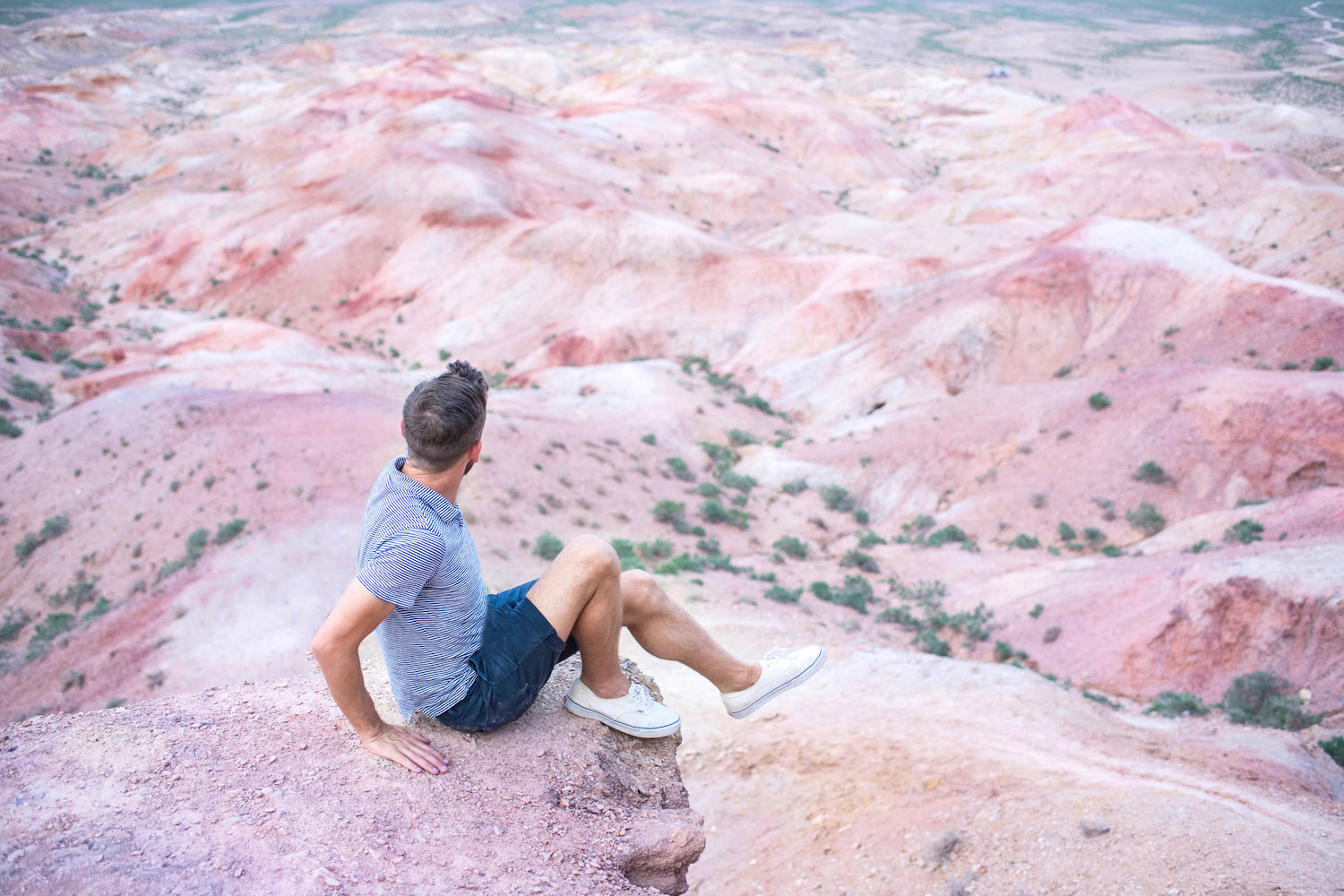
In the first of many moments in Mongolia that left my mouth gaping and my mind wiped clean of everything besides the scene in front of my eyes, I saw a massive caravan of Bactrian camels emerge from the mists of the Gobi, which was covered in a lush carpet of grass thanks to the heavy rains of the preceding weeks. I counted at least 100 as I exited the van, the creatures standing before me apparently as amazed at my interest in them as I’d been by their mere presence.
Later that evening, as we stopped for what I assumed would be a brief “toilet” (Spoiler alert: There are no actual toilets in most of Mongolia) break, I peered out over the cliff where we’d parked to see Tsagaan Suvraga (more popularly known as the “White Stupa”), whose limestone cliffs and valleys glowed pink under the setting sun on account of the quartz in them. I wondered whether I was still on Earth.
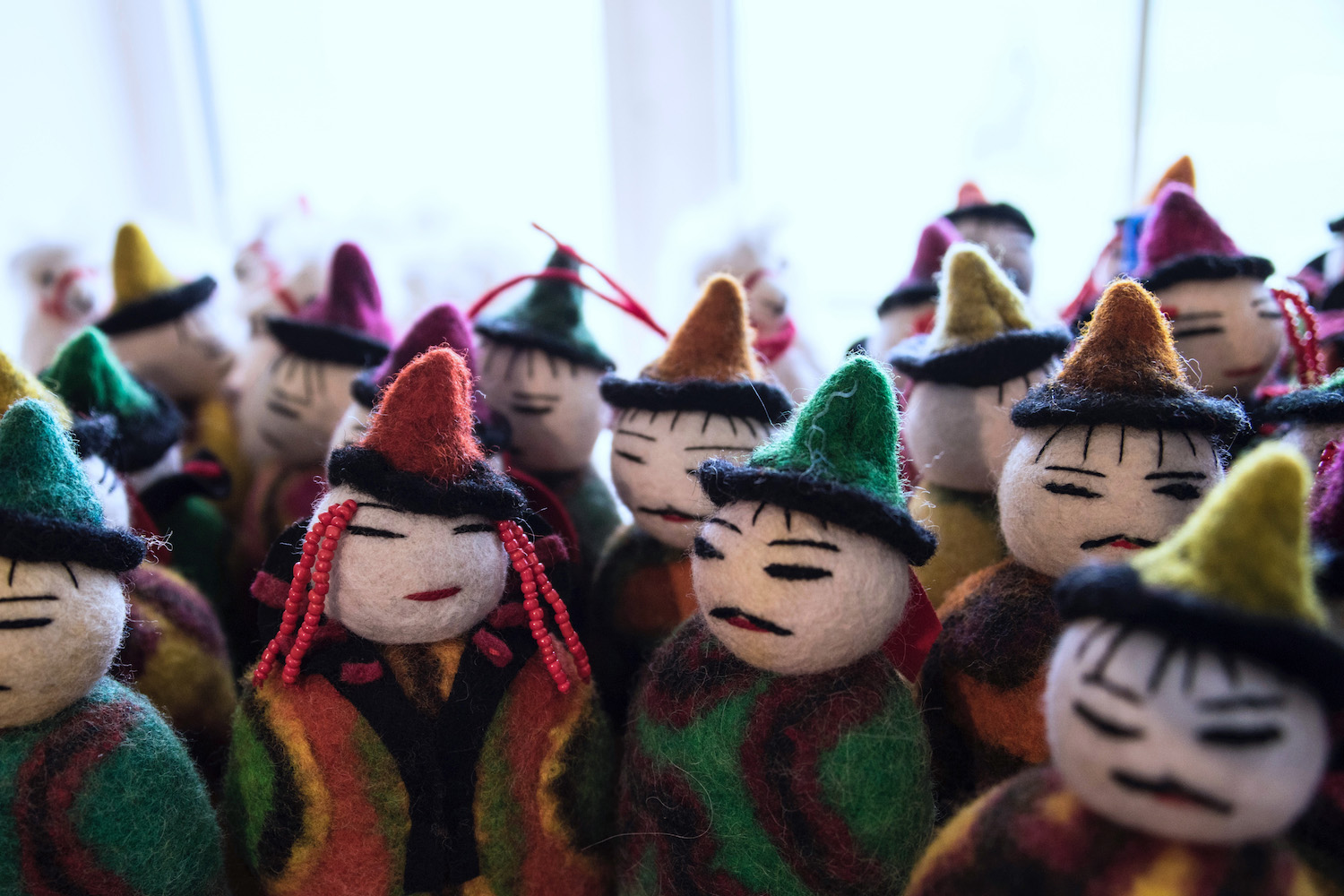
This feeling continued the next afternoon during Mongolia trekking in the massive Yol Valley, a lush canyon seemingly cut-and-pasted into the most arid reaches of the country, and atop the “singing dunes” of Khongoryn Els the day after that, when the blinding cobalt of the Eternal Blue Sky ripped apart the morning clouds that had hovered above me during my 200-meter, nearly vertical climb up to the precipice.
From the moment I laid eyes upon the salmon sands Tsagaan Suvraga, my wonderment about Mongolia eclipsed my worry by a factor of thousands as I explored all the amazing things to do in Mongolia. Until that fateful river fording, at least.
Where Mirages Are Endemic
Right up until it. The evening before, after watching a fiery sunset paint amber and carmine onto the “flaming” cliffs of Bayanzag (where it was first discovered, in the 1920s, that dinosaurs laid eggs like birds), the girls and I arrived back to our ger camp (the most common type of accommodation in Mongolia) to find that the Milky Way had decided to make an appearance.
Which is not to say that misfortune evaded me entirely on my Gobi desert tour, or that it was entirely separate from the various moments of transcendence I experienced.
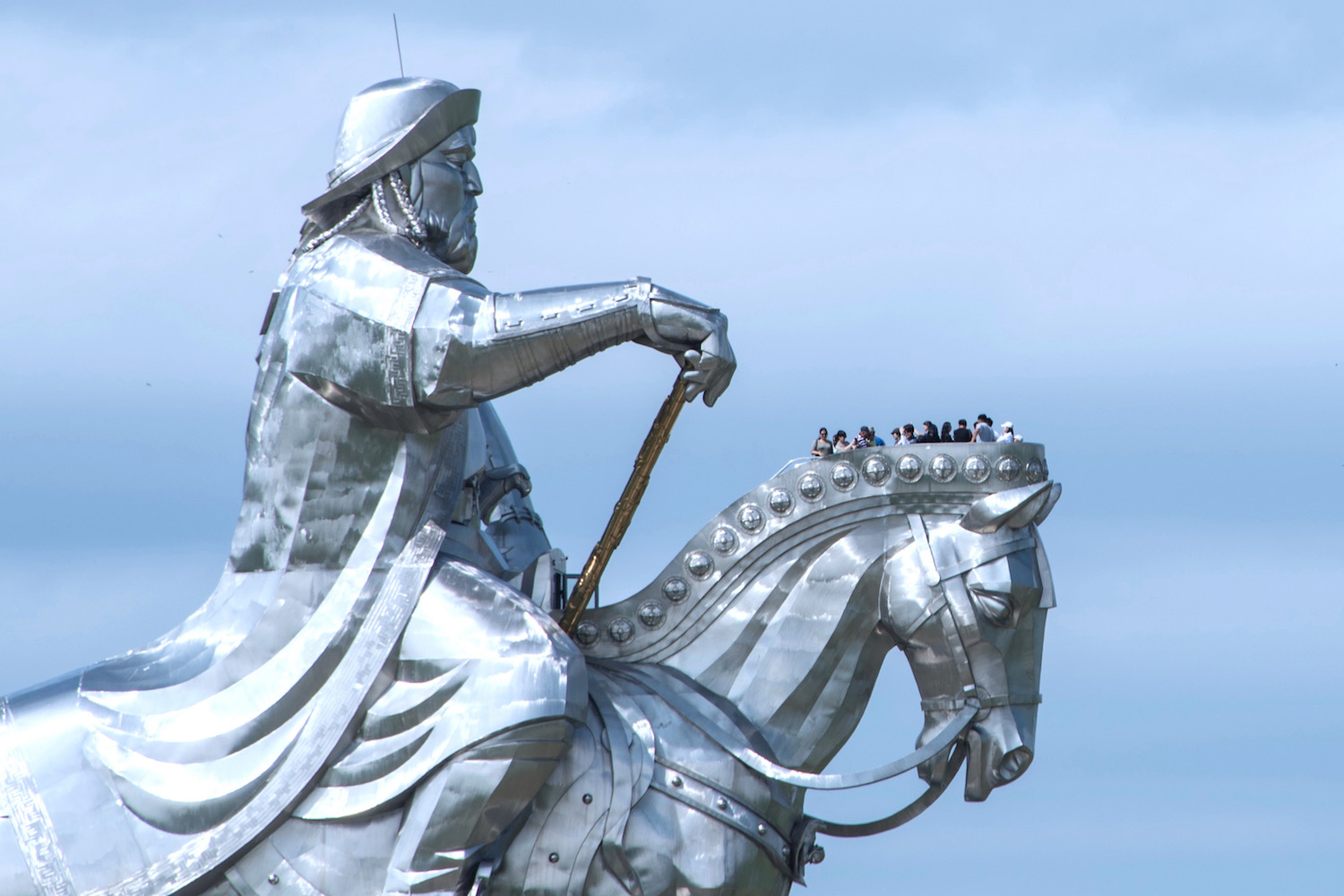
After waking up on day three, for example, I emerged from my Yol Valley dwelling into a landscape that evoked dreams I’d had about a terraformed Mars; I imagined myself as a space tourist more than a terrestrial one. Unfortunately, I was still susceptible to gravity, and suffered a humiliating fall less than a minute into what I assumed would be an easy morning run, on account of the cool temperatures.
At the base of Khongoryn Els the following afternoon, a puppy greeted me by licking the barely-scabbed wounds on my knees. I must’ve asked my guide (who, in turn, asked the host family) a dozen times whether the young dog had been exposed to rabies at any point in its short life, a question that hummed under my heavy breath as I powered up the singing dunes the next morning.
That afternoon, en route to the Flaming Cliffs, I would read about a battle in which Genghis Khan had suffered a severe wound, and lived through the night because one of his companions literally drank the blood that gushed from it. Perspective is especially important in landscapes where mirages are endemic.
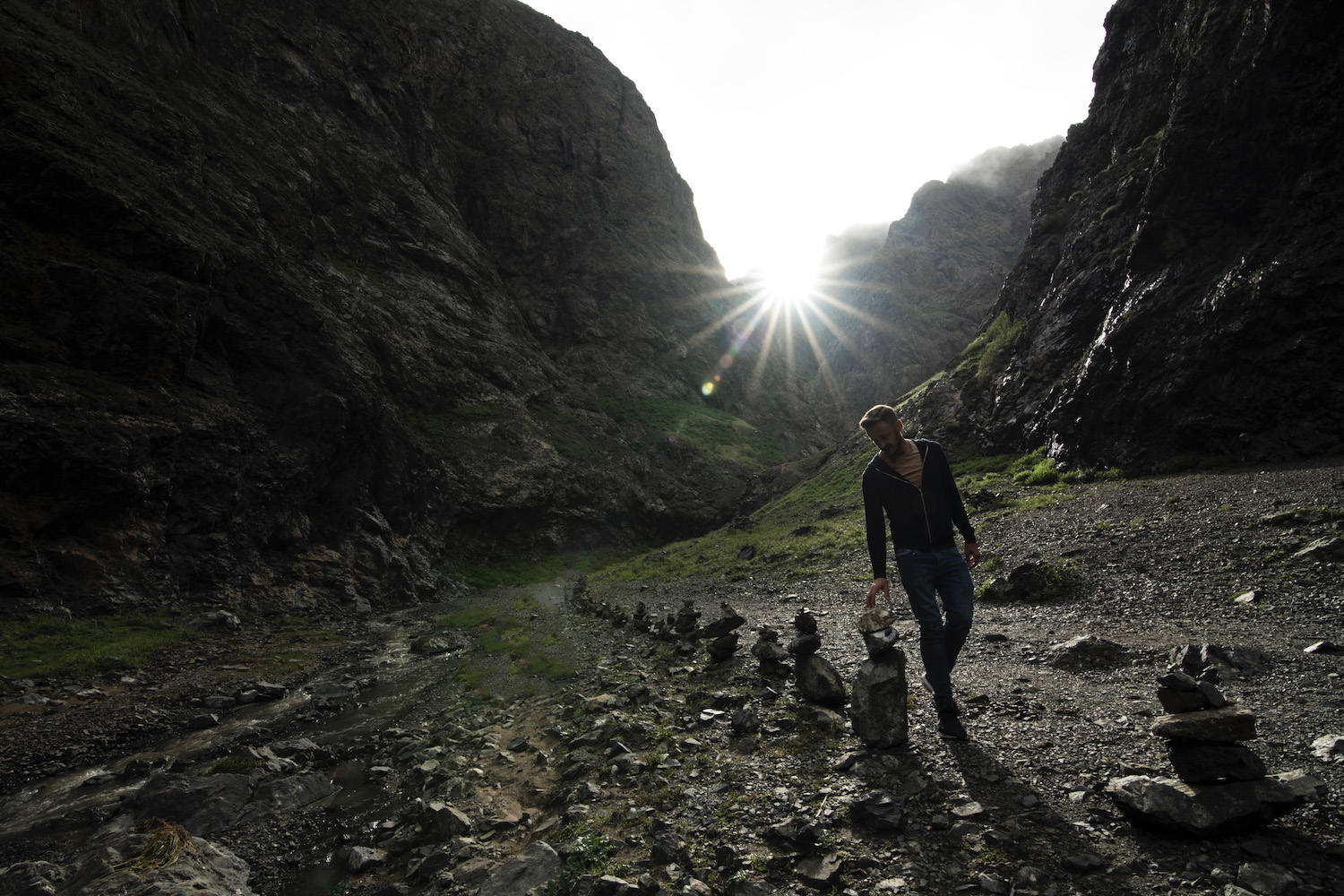
Which is not say that you shouldn’t consider little annoyances as you ask yourself “is Mongolia worth visiting?” just as carefully as all the fierce beauty I’ve highlighted. You should be prepare to shit (and, if you’re female, piss) into a hole in the ground, sleep on a slab of wood, eat mutton at two out of every three meals, be offered strange and often unsavory dairy foodstuffs upon entry into the homes of host families and be expected to try then, even if their aroma brings tears to your eyes.
You will go days without 3G internet (or any cell reception at all) and electricity (save for the car battery or small color panel that will power the single light inside your ger), you will travel for hundreds (maybe thousands) of kilometers over cratered dirt and rock (and, if you’re as unlucky as I was, rushing rivers of mud) that couldn’t be mistaken as road under any circumstances.
A Supernatural Sense of Optimism
Make no mistake: The failed river fording just north of the Flaming Cliffs was a very minor part of my trip to Mongolia, and was one of very few Mongolia travel problems I actually encountered during my visit.
To be sure, within minutes of the driver freeing the vehicle, my feet still caked in the mud I’d had to walk through to reach safety (the Singaporeans, who have much better senses of humor than I do, joked that we’d enjoyed a free spa treatment), I was back to reading my book, which was soaking wet—this was the useful possession I’d mistakenly left in the car.
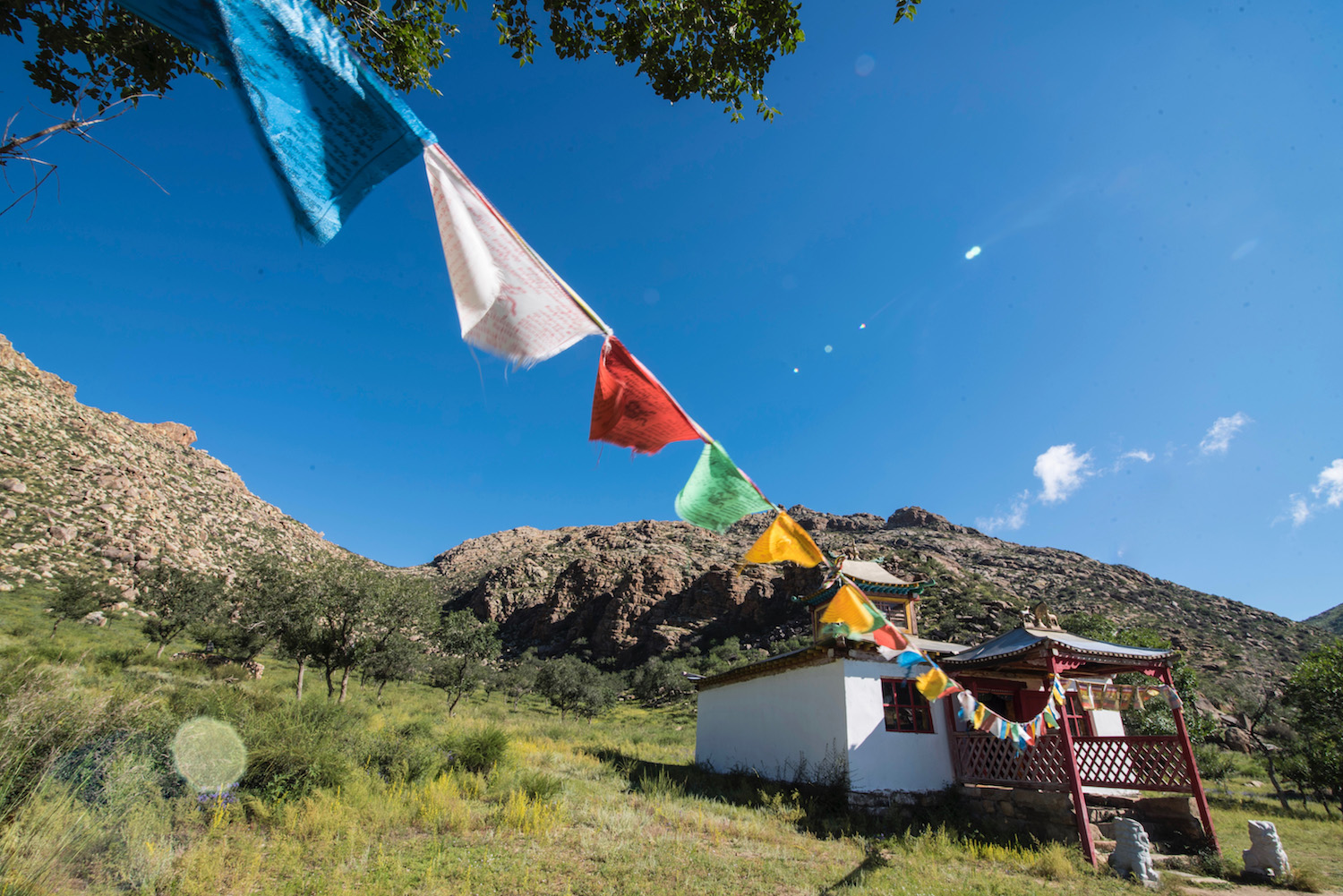
I wondered, without a hint of condescension, how a country that was once the most powerful in the world had become a place where 17th-century snafus could halt a group of 21st-century people in their tracks.
I also marveled at this fact: People in Mongolia, at least outside the capital, live in largely the same way as they have for millennia—off the land, using the animals they herd not only for food and entertainment (children play all sorts of games with sheep’s ankle bones), but indeed to weather-proof their portable homes, which are lined with felt in the winter to keep out temperatures that can drop below -50ºC.
That Mongolian nomads maintain an exceedingly sustainable way of life in self-evident; theirs is perhaps the longest surviving civilization in the world.

The Mongolian culture that has developed as a result of this lifestyle, both its positive aspects and its seemingly negative ones, is likewise remarkable. I not only felt immediately and profoundly welcomed by every member of every family I stayed with, even when I refused (and not always tactfully) their unappetizing offerings, but developed an immediate and genuine kinship with my three Singaporean companions, and my incredible guide whom I discovered near the end of the trip is more than a decade younger than me, though she easily bests me in intelligence, maturity and grace.
Being in Mongolia fosters a supernatural sense of optimism. The Bukhanka broke down for several hours about 30 minutes after we finally made it out of the mud, and the sun emerged from behind a dissipating thunderhead at the precise moment we began speeding northward, creating a brilliant double rainbow right out of a Lisa Frank notebook.
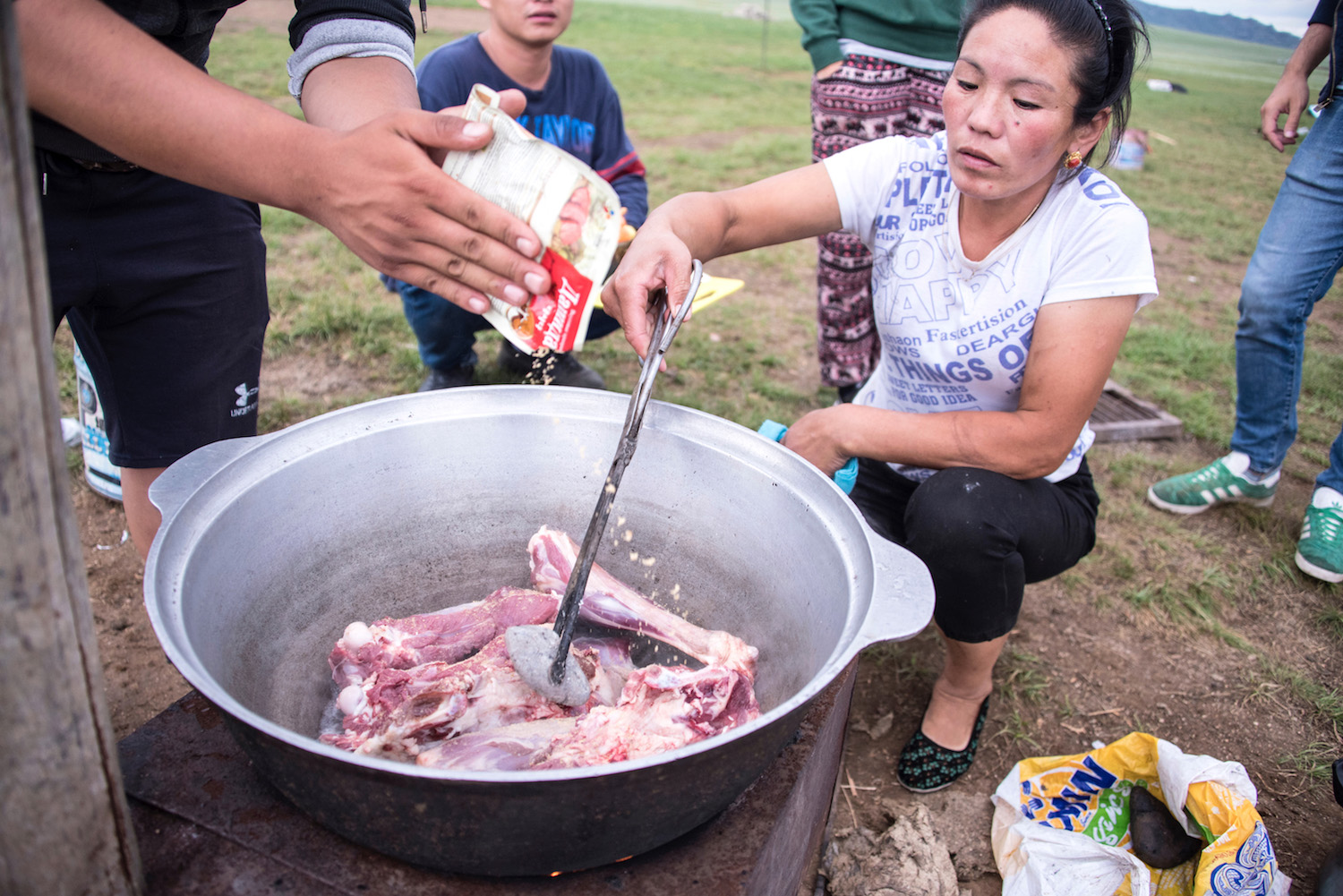
As I stepped out into the sun the next morning (it’s almost always sunny in Mongolia in the morning, even if clouds quickly creepy in), a delightful scent wafted up into my nose: Our camp sat atop a carpet of spring onions.
The love I developed for Mongolia throughout my trip grew as massive as the Blue Sky, which in my opinion is more infinite than Eternal. It was sometimes painful, particularly in the moments when the experiences I lived through made me want to hate it. And it was as enduring as the temporary river that nearly doomed my entire trip, which I learned days after the fact had flowed out of a mountain nearly 100 kilometers away in the weeks since the rain started.
(Apparently, a local man had driven along its banks for hours in order to confirm this fact.)
To Know What They Know
But let’s leave that noise behind once and for all. If you’re now asking yourself “is Mongolia safe?” as I did many times, you should excise my “Oregon Trail” experience from the equation.
I’d also like to move forward from the delightful carpet of spring onions, and even from the lush Orkhon Valley (which I haven’t mentioned at all in this Mongolia travel blog, probably because the guide for my Mongolia horse trek seemed to shame me for my apparent ineptitude in the Three Manly Sports, or at least the one he specialized in).
No, I want to take you to the final ger camp of the trip, where the girls and our guide and three Germans, two Belgians and a half-dozen other Mongolians feasted on the only legitimately delicious mutton of the entire trip, as the clouds around us screamed fuchsia to bid the setting sun goodnight.
Where, the following morning, a run and then a bumpy Bukhanka journey to a rebuilt monastery that had been obliterated during the Communist period would reveal a scene that evoked Africa’s Rift Valley more than the grasslands of Central Asia. (Are you losing track of all the different landscapes I encountered during my trip to Mongolia? Because I did as each new one appeared before my eyes).

“Mongolia will become a big deal in the travel world one day,” I declared, as the girls and I sat down for our final game of Bananagrams, an activity that had bound me with them in the way the Korean soap operas on which they’d spent their fleeting data allowances and limited power supply had reinforced their own existing ties. “It’s a matter of if, not when.”
I spelled out the word L-O-S-E and shouted “Peel” (which, in the context of Bananagrams, indicates that a player has exhausted their letters and everyone needs to draw one more tile)—it was an appropriate coincidence that this was the only move I could make at this point in the game.
Yes, Mongolia will eventually be considered a mainstream of sorts; by that time roads and power lines and cell towers will probably be as common here as outhouses and people wearing the deel as they go about their daily business and alcohol made from fermented mare’s milk are now. But I do fear, selfishly or at least self-indulgently, that Mongolia will lose some of what makes it into a country I can now say, 72 hours after the end of my trip, is the most unique place I’ve ever visited.
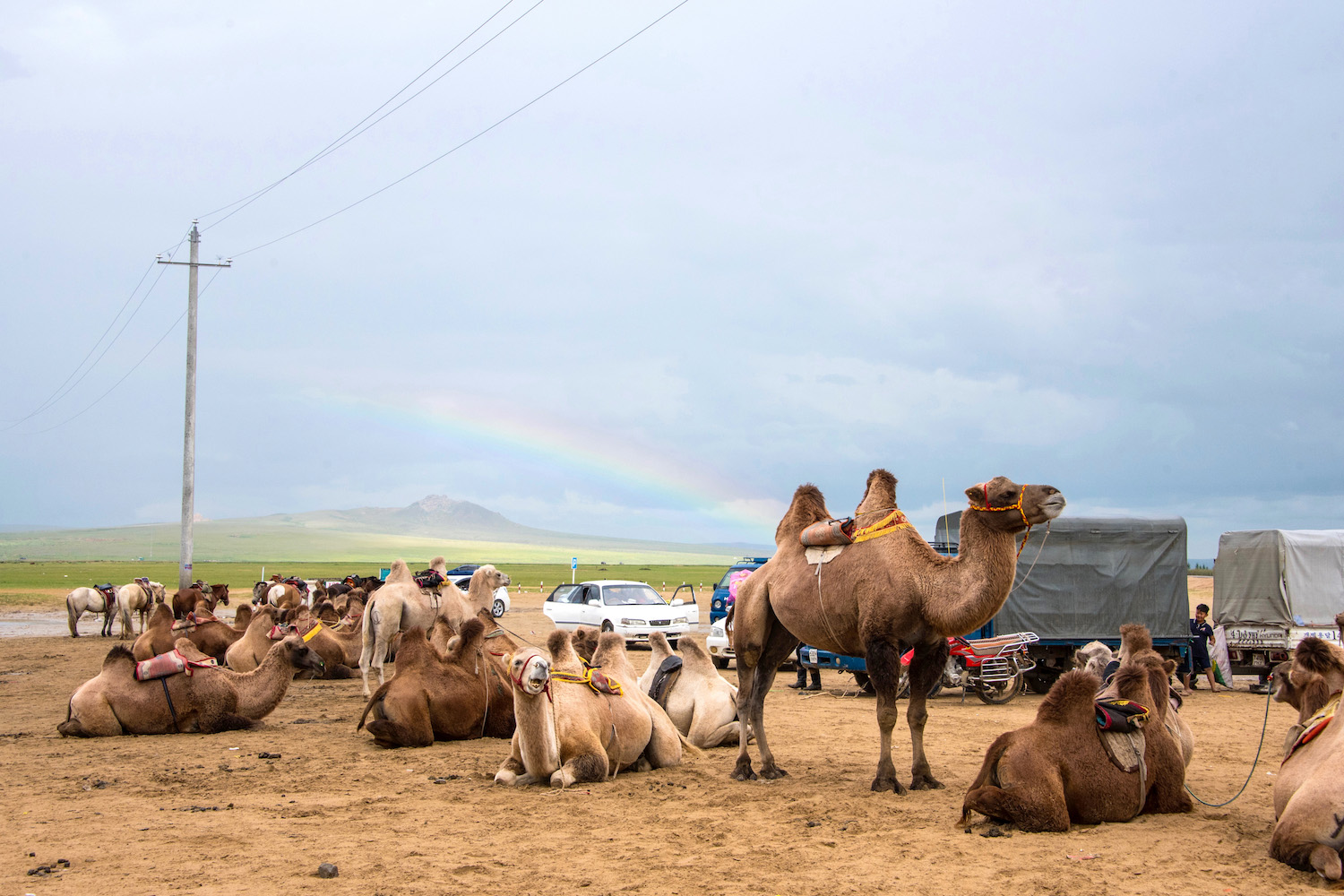
The Bactrian camels of the Gobi might no longer wear golden jewelry looted from the conquered citadels of modern-day Uzbekistan, but in a very profound way, Genghis Khan’s legacy still lives on.
“Yesterday it was a cabinet of yaks,” I chuckled as my running buddy and I stopped in our tracks on account of the huge bull that was blocking the entire gravel path. “Only they hauled ass the moment they saw me approach.”
During our hour-and-ten-minute workout, we discussed a wide range of topics, from travel (he was in the first quartile of a round-the-world journey that would last at least a year), to the politics of America and Europe, to the effects of fitness on the aging process (he was only 19, though he looked 25 in the most delectable way possible), to what he hoped to gain from the 11 days he had yet to spend with the family whose camp I would soon be leaving, first for the aforementioned monastery and then to begin my long journey back to Thailand.
“I want to know what they know,” he said, without expounding on his statement. “I want to take it with me.”
Is Monoglia Worth Visiting?
As I unzipped my duffle bag upon stumbling, exhausted, into my Bangkok condo for the first time in nearly two weeks, my wounded book was still damp to the touch, still stained the same chocolate color as the water in which it had been submerged. I felt a camaraderie with it, if that’s possible with an inanimate object: I was as bruised, battered and malodorous as the tome, but as brimming (at least I hoped I was) with knowledge and insight.
I set the rippled pile of paper on my coffee table, and remembered the final observation I’d made on the way to the airport, my last day in Mongolia. The heavens radiated a particularly penetrating hue of cerulean that afternoon; the lack of notable clouds floating past, and the fact that the lapis gradient seemed to stretch as far as the endless horizon in every direction made me believe, perhaps for the first time on my trip, that it might actually go on forever, as any Mongolian will tell you it does.
The UAZ Bukhanka slowed as it approached the departure level of Chingghis Khan International Airport, and I spoke under my breath as it stopped for the last time. “Goodbye, Eternal Blue Sky.”
I perused many Mongolia tour operators in the lead-up to my trip, and in the aftermath of it I feel happy to have chosen Sunpath Mongolia. In addition to the fact that Sunpath’s expert driver saw to the safe evacuation and onward transport of myself, my three tour companions and our guide, the itinerary was perfect, the insights into traditional Mongolian life were fascinating and the country—well, you just read what I wrote, didn’t you?

Robert Schrader is a travel writer and photographer who’s been roaming the world independently since 2005, writing for publications such as “CNNGo” and “Shanghaiist” along the way. His blog, Leave Your Daily Hell, provides a mix of travel advice, destination guides and personal essays covering the more esoteric aspects of life as a traveler.








